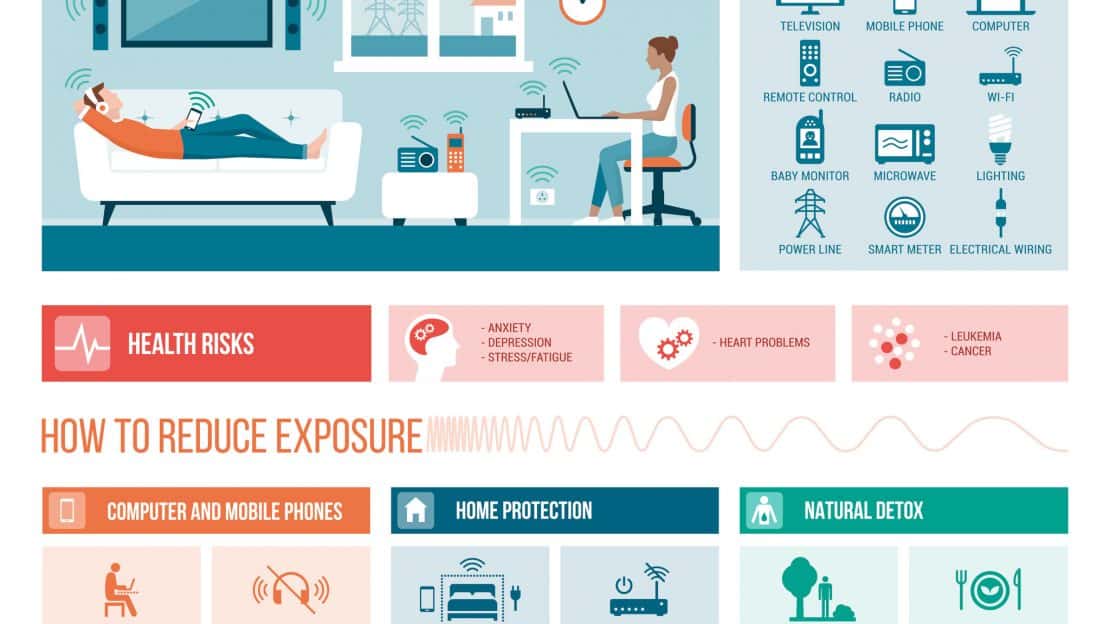RF-EMF radiation can cause damage to DNA, heat up of tissues and even disrupt the blood-brain barrier. These are real-world effects, and ARPANSA is actively engaged within the EHS group, the medical specialists as well as researchers. ARPANSA will continue review research on the health effects caused by EMF radiation.
RF-EMF causes DNA damage
Exposed to man-made electromagnetic fields (EMFs) can cause DNA damage, as well as other adverse health adverse effects. EMFs can affect the intracellular ionic levels, which are essential to ensure the electrochemical balance of cells. It can also disrupt cell homeostasis, resulting in DNA damage. Furthermore, exposure to EMFs can also trigger an increase in the production of free radicals and reactive oxygen species (ROS).

emf radiation to radiation from RF-EMF has been associated with changes in the development of male germ cells. This involves the transformation of germ cells into spermatozoa, aswell as functional maturation as the spermatozoa travel throughout the epididymis. To determine the effects of RF-EMF on male germ cell development, a specially-built waveguide machine was designed to expose unrestrained mice to RF-EME with a dose of 2.2 W/kg.
In a study that was conducted recently, researchers discovered that exposure to RF-EME caused the oxidative DNA damage of the spermatozoa. Sperm DNA fragmentation was increased by 18% after an entire week of treatment and by 23 percent after 5 weeks. Furthermore, DNA damage in mitochondria was observed by measuring the level of a biomarker, 8-hydroxy-2-deoxyguanosine (8-OH-dG).
Despite this, the radiation emitted by RF-EMF isn't yet considered to be a carcinogen. But, several studies have revealed that exposure to RF-EMF can affect the integrity of DNA in range of cell varieties. In one such study, scientists subjected Vero cells to an EMF of 100 Hz for 45 minutes. They measured DNA damage 48 hours after exposure to determine whether the exposure affected the integrity of DNA.
The RF-EMF effect causes the heating of tissues
Although the effects of RF-EMF are typically considered to have thermal origins, some studies have revealed that non-thermal influences are also present. These may be the reason for some of the unresolved observations in epidemiological studies of EMF hypersensitivity. what is emf radiation is why it is crucial to look at the non-thermal aspects when conducting an exhaustive review.
The non-thermal effects of RF-EMF could be mediated by the cell membrane. This is an area of research that has been thoroughly studied. In particular the electrochemical behavior of cell membranes has been studied. It is believed that RF-EMF energy that exceeds 1 MHz is transferred to the tissue via dielectric and the dissipation of ions. Previous theoretical analyses indicated that the energy transfer to tissues could be up to 200 kV/m.
The electric properties of tissue are regulated through the distribution and composition of water molecules and other molecules within the body. This determines how well absorbed RF EMR is by different tissues. The tissues with the highest conductivity tend to absorb more of the EMR field and produce more of an effect. This is why the level of heating in tissues doesn't increase continuously between the outside and inside the body and is only noticeable in hot areas. Bone and fatty tissue is less susceptible to RF heating as compared to other tissues, since they are not as water-based. content.
The extent of penetration of the electromagnetic field depends on the frequency and strength of the field. Muscle tissue is more able to absorb field energy than other tissues and converts it to heat more efficiently. Usually the depth of penetration that RFEMF has is measured as millimeters (mm). But, the higher the frequency, the shallower the penetration.
RF-EMF causes blood-brain barrier disruption
Researchers have discovered that RF-EMF can alter the blood-brain-barrier which can alter sleep patterns and neurotransmitter levels. In addition the impacts that EMF on brain activity are linked to neurodegenerative diseases. For instance, EMF from mobile phones could affect the electroencephalogram's activity and sleep patterns, in addition to the activity of nitric oxide and xanthin oxidase.
Researchers at the Vienna University have studied the effects of exposure to RF-EMF in brain cells. They also studied the effects of ELF EMF on the brain system. While the mechanisms of the cell that are involved aren't fully understood however, there is an obvious relationship between exposure to ELF EMF and depletion of myelin. This relationship might account for the electro-hypersensitivity symptoms of electro-hypersensitivity. Fortunately, there are some known methods for regenerating myelin in the brain.
Researchers have observed that exposure to 900 MHz EMF caused a rise in the permeability of BBB and increased signs of neuronal damage in rodents. They also observed increased exovasation of albumin to neurons. Furthermore, they discovered the following: after 30 mins of 900 MHz exposure 99mTcMIBI increased its permeation to the cerebral cortex. But this effect didn't occur when using Evans blue injections.
However, RF-EMF has no clear mechanism for disrupting the BBB. emf radiation symptoms suggests that EMF exposure may increase erythrocyte cell membrane permeability, which may influence the BBB and also increase the efflux of calcium ions. Furthermore, the presence a 99mTc-MIBI radiotracer within the brain has also been linked to an increase in the permeability and permeability of the BBB.
